How to choose, install, and replace compressed air filters?
Different customers due to different quality requirements, the need for further filtration and purification of compressed air processing, that is, the installation of a portion of the pipeline filter on the pipeline to ensure that the compressed air in the dust, oil content is reduced to a certain level, the number of pollutants will be reduced to an acceptable level. Effective removal of these pollutants, can take different ways and means, this article tells about the use of pipeline filters.
1.The Role of Compressed Air Line Filters
Compressed air line filters help protect compressed air precision use equipment and processes from secondary sources of dust, oil, microorganisms and odors. Dust particles are usually solid particles in the air, which can cause damage to humans or products. According to statistics, there are up to 141 million particles in a cubic meter of atmosphere, and when compressed to 7.0 bar, the concentration is more than 141,000,000,000, of which more than 80% are less than 2 um. Typically, the inlet filters of an air compressor filter particles of about 10 um or more, and are designed to protect only the air compressor itself, and not to protect any downstream equipment. In addition, wear particles generated by the compressor during operation and deposits from oil degradation when exposed to the heat of compression can be carried with the compressed air to downstream equipment or processes. With a typical oil-injected screw compressor outlet oil content of >3ppm, such substances also continue to enter downstream equipment and processes. Therefore, installing a pipeline filter in front of the compressed air use end can effectively remove these pollutants, which is very necessary for users.
2.Main Mechanisms of Compressed Air Pipeline Filters
The main filtration mechanisms of compressed air pipeline filters: direct interception, inertial impact and diffusion. Can also enhance the filtering effect through electrostatic attraction.
①.Direct interception: when particles and filter media fibers collision without deviating from the flow line, direct interception will occur. This type of action usually occurs on the surface of the filter element, mainly affecting larger size particles (usually more than 1 micron).
②. Inertial collision: Inertial collision occurs when particles in the airflow through the fiber maze in the filter element, can not stay in the streamline flow, and fiber collision and adhere to it. This usually occurs with particles of 0.3 to 1.0 microns.
③. Diffusion (or Brownian motion) occurs on the smallest particles, below 0.3 microns. These particles tend to pass through the filter element in the air stream, increasing the likelihood of collision and adhesion to the filter fibers.
When compressed air line filters are used for a sufficiently long period of time, the filter element becomes adherent to a buildup of contaminants, causing the compressed air passage to be subjected to a certain amount of resistance, and is a source of pressure loss within the system. As a rule of thumb, a pressure loss of 1 bar increases energy consumption by 7%. Routine replacement of compressed air filter elements can reduce energy costs.
Classification of compressed air duct filters
①. Dust filters. Mainly removes particles above 1.0 micron, the design of the pipeline filter will make the different mechanisms and the desired degree of pollutant removal occurs some overlapping effects. System piping if the direct installation of higher precision filters, will lead to a higher pressure drop in the system, the need for air compressors to provide higher pressures and pay additional energy costs, and later replacement of maintenance costs are also very high. Dust filters can therefore be effective in reducing pressure drop ratings, but the maximum allowable pressure drop prior to cartridge replacement must also be considered when determining pressures at the outlet of the air compressor and downstream of the drying and filtration equipment. This is why most customers basically install dust filters. It is recommended that a dust duct filter be installed downstream of the air dryer and before all operating equipment and processes.
②. Coalescing filter. Removal of small droplets of particles, moisture or oil below 1.0 micron allows the small droplets to adhere to the filter media and coalesce into larger droplets. Flow through the filter element is from the inside to the outside, where the larger diameter allows for a lower exit velocity. Anti-reentrainment barriers are often provided to prevent droplets from being reintroduced into the air stream. The porous structure allows the coalesced liquid to flow downward by gravity to the bottom of the filter cup, where it is usually drained from the cup by means of an automatic drain, which may contain oil and water.
Coalescing should not result in an increase in pressure drop over the life of the filter. If the coalescing filter is not preceded by an adequate dust filter, the increase in pressure drop is usually due to the accumulation of particulate matter. The normal pressure drop should be the “wet” pressure drop after the design element is saturated. The “dry” pressure drop before the element is properly wetted will be reduced, and it is recommended that coalescing filters be used prior to any dryer that may have adsorbent media to prevent damage to downstream equipment or processes from oil. The term “oil” includes petroleum-based and synthetic hydrocarbons as well as other synthetic oils such as diesters that can affect materials such as acrylics.
③.Adsorption Filters
Particulate and coalescing filters remove very small solid or liquid particles under 0.01 microns, but not oil vapors or odors. Adsorption is the attraction and adhesion of gas and liquid molecules to solid surfaces. Typically, filter elements contain activated carbon particles, which have very high surface area and residence time. Activated carbon media is only used for adsorption of vapors. Adsorption line filters must be protected by an upstream coalescing type filter to prevent serious contamination of the liquid oil. A collection of systems fitted with all three types of filters will result in compressed air of relatively high quality.
3. Installation Requirements for Compressed Air Pipeline Filters
In the air quality grades defined by ISO 8573-1 (see table below), Grade 1 addresses particulate matter content, Grade 2 addresses moisture content, and Grade 3 addresses hydrocarbons (oil).
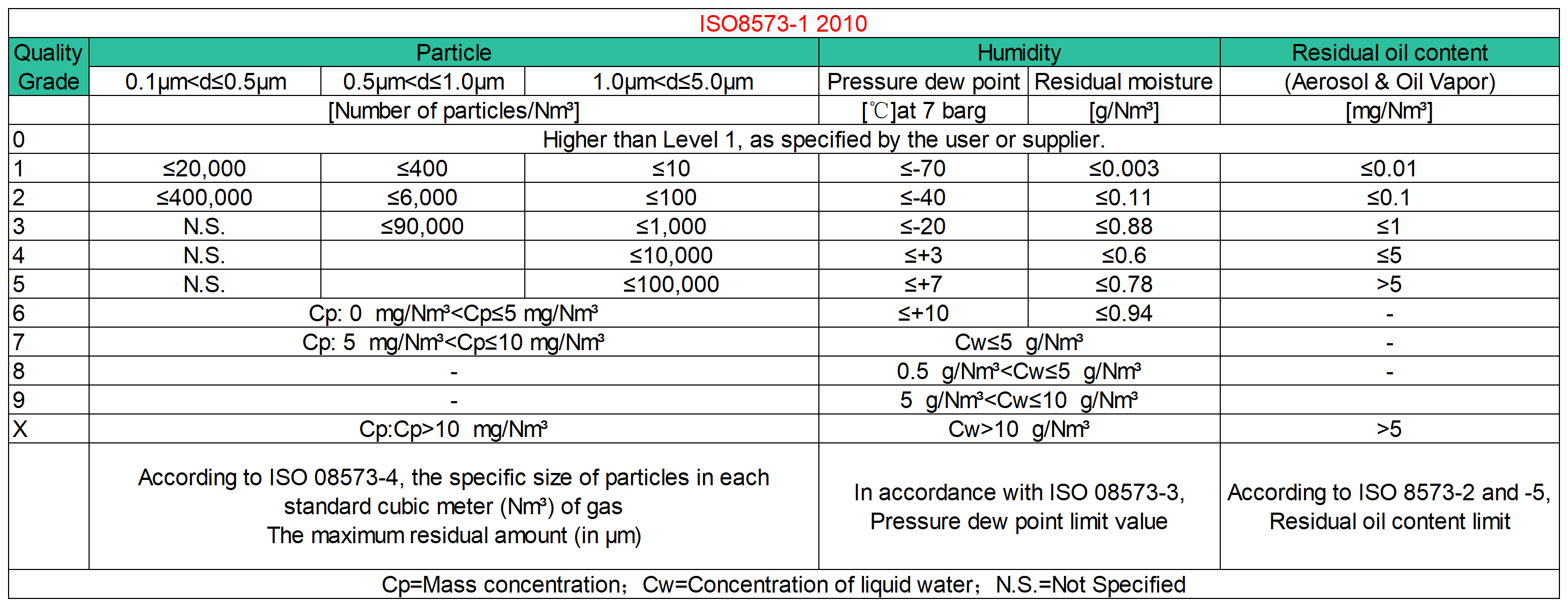
The coalescing filter installed after the aftercooler and moisture separator (Figure 1) removes particles as small as 1 micron and liquids as low as 0.5 ppm (at a rated temperature of 21°C), meeting gas quality requirements for grades 1 through 3. This includes Grade 1 for particulates, no moisture grade, and Grade 3 for hydrocarbons.
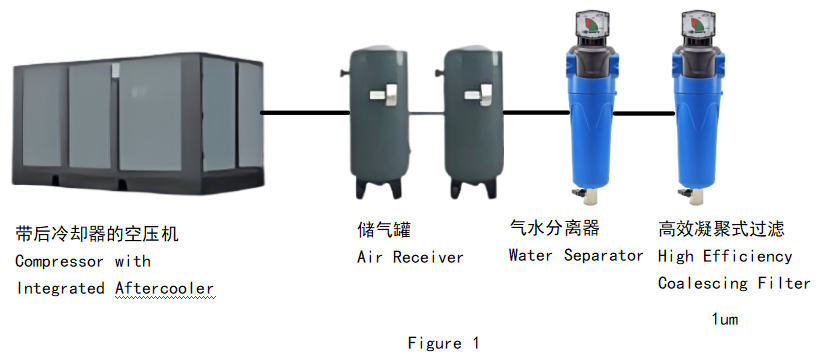
2.The high-efficiency coalescing filter (Figure 2), positioned after the air aftercooler and moisture separator (Figure 2), removes liquid particles as small as 0.01 microns. This filter features a primary stage for particulate matter (no moisture rating) and a secondary stage for hydrocarbon separation.

3.The same type of filter used with refrigerated dryers (Figure 3) will meet the gas quality requirements of Class 1.4.1.

4.If the pressure dew point of the desiccant dryer is -40°C, then a high-efficiency coalescing filter placed upstream to protect the desiccant bed and a dust filter placed downstream (Figure 4) will meet the Class 1.2.2 gas quality requirement.
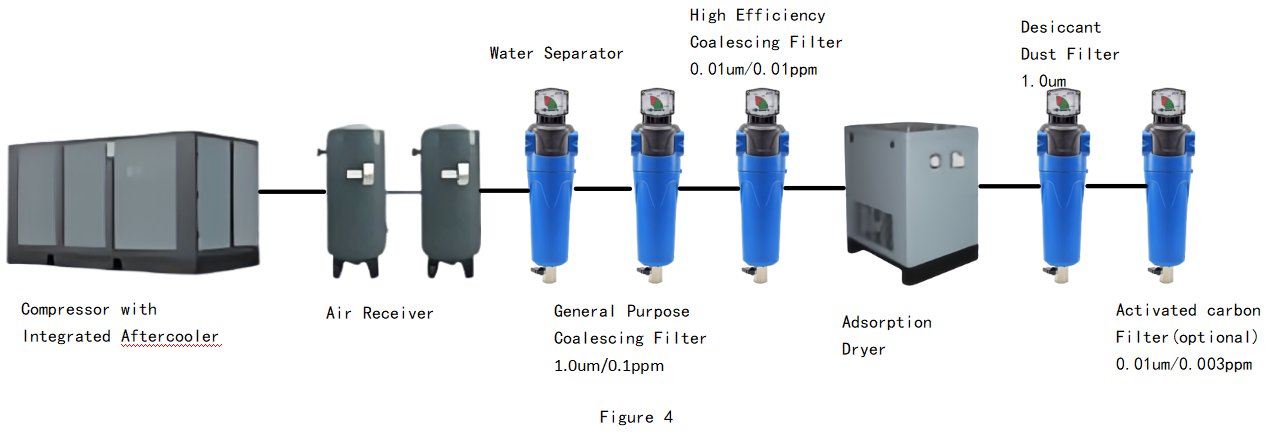
When combined with an activated carbon filter, oil content can be reduced to 0.003 ppm, thereby meeting Class 1.2.1 specifications. This class may be termed “oil-free,” with hydrocarbon content below typical industrial atmospheric levels. If the pressure dew point rating of the regenerative desiccant dryer is -73°C, this combination will satisfy higher-grade gas quality requirements. Replacing the desiccant dryer with a refrigerated dryer will still meet the “oil-free” condition but with a higher pressure dew point (3°C), corresponding to Class 1.4.1 gas quality requirements.
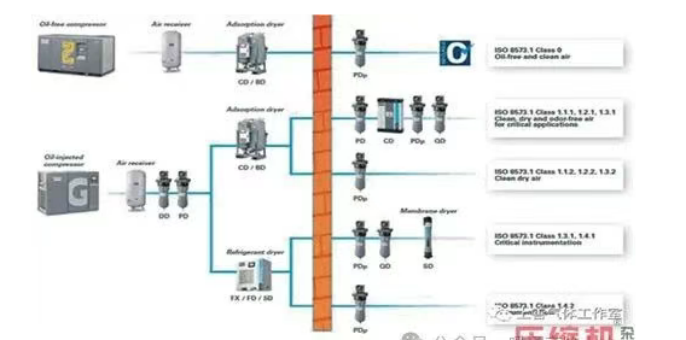
5.Atmospheric conditions are often poor, particularly in industrial environments where air contains condensable hydrocarbons from unburned fuel emitted by engines, heaters, and other sources. These concentrations are estimated to range from 0.05 to 0.25 ppm. Aerosols are also atomized to sizes between 0.8 and 0.01 micrometers. Oil-free air compressors do not produce oil contamination, but the atmospheric air entering the compressor inevitably contains varying levels of these pollutants. Therefore, oil-free compressors also require thorough drying and filtration after compression to meet Class 1.2.1 (Figure 5) or 1.1.1 gas quality requirements. For instance, moisture content in saturated air at different temperatures necessitates additional treatment to satisfy respiratory or medical air standards. Compressed air systems must install pipeline filters sequentially according to precision requirements, ensuring correct orientation. Regularly drain contaminants and dispose of them as specified.
In summary, compressed air pipeline filters vary depending on different customers' specific requirements for compressed air usage. To prevent secondary contamination of both products and personnel, appropriate measures must be implemented. Therefore, different pipeline filters should be selected for different application environments. This article merely offers an interpretation of compressed air pipeline filter products. Should any inaccuracies be found, please point them out, and the author will promptly make revisions.




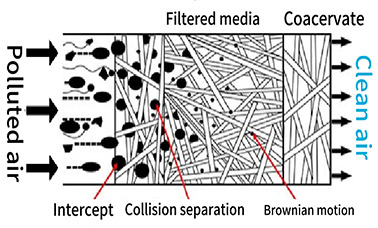
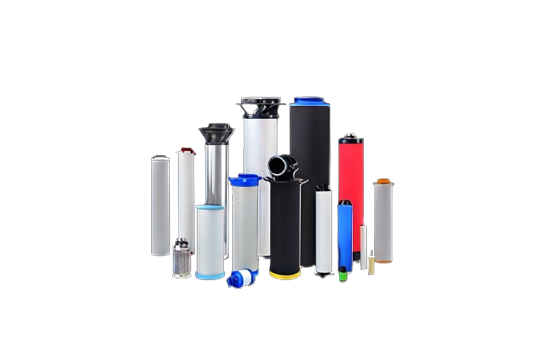

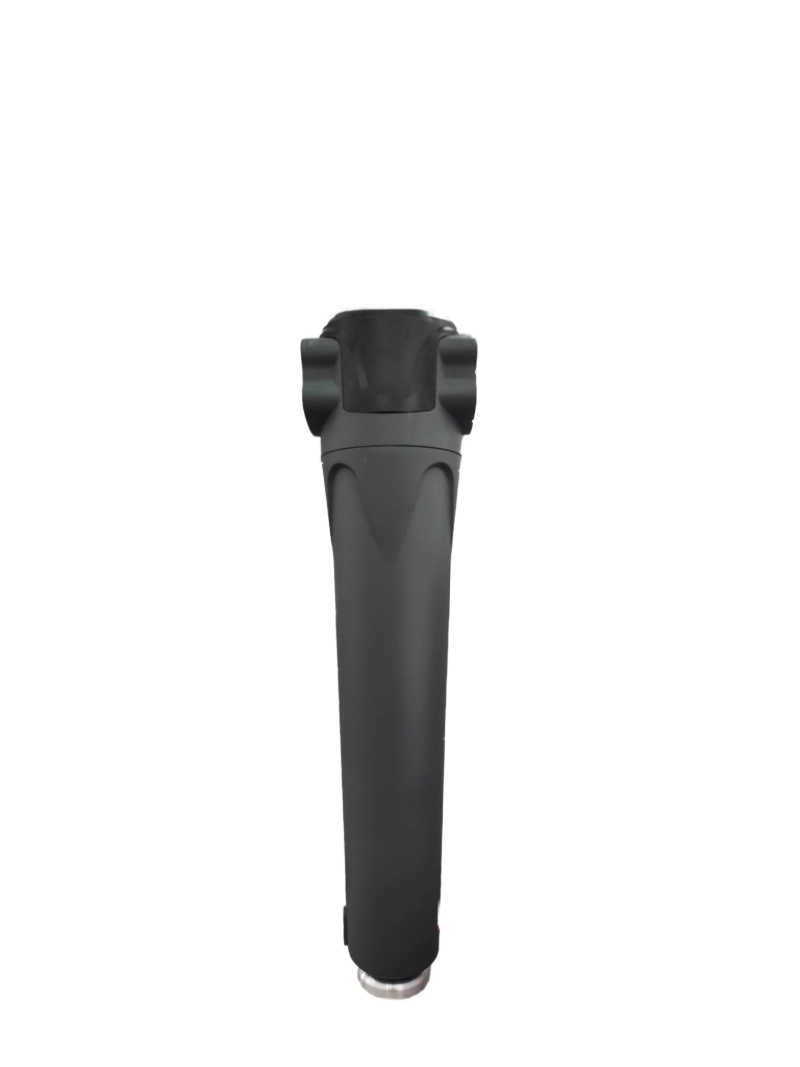
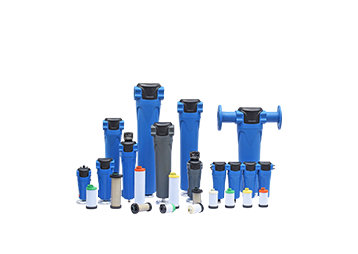
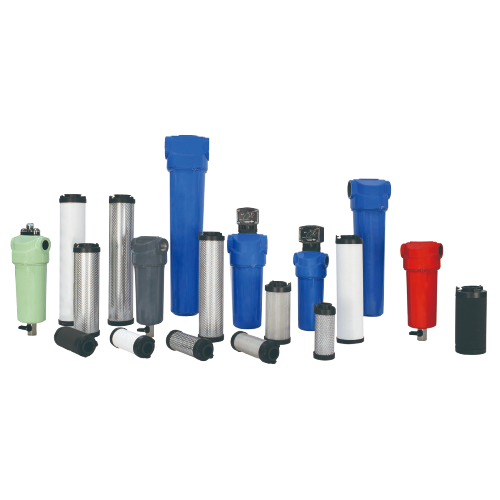
 Join us
Join us After-sale service
After-sale service News
News





